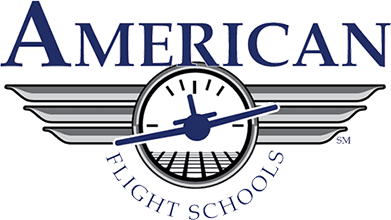Private Pilot
A private pilot certificate is for those who have always wanted to fly and is the starting point for those who have higher aviation goals.
Many private pilots are interested in flying for fun and flying a variety of different aircraft. Others learn to fly so they are able to use an aircraft to support their business or professional interests, like flying themselves to meetings to cut down on travel time. Whatever the goal, private pilots have many options.
A private pilot certificate is the certificate held by the majority of active pilots in the USA. It allows command of any aircraft weighing less than 12,500 lbs, (subject to appropriate ratings) for any non-commercial purpose and gives almost unlimited authority to fly under visual flight rules (VFR). A private pilot may carry passengers and flight in furtherance of a business. However, a private pilot may not be compensated for services as a pilot. Passengers are only allowed to pay a pro-rata share of flight expenses, such as fuel or rental costs.
What can you do as a Private Pilot?
With a private pilot certificate, a pilot can rent aircraft from Aurora Flight Training and fly anywhere in the US. Our diverse fleet enables renters to experience the wide variety of aircraft available in the US market. A private pilot certificate is the minimum requirement for adding other ratings and more advanced certificates. American Flight School offers most of the advanced certificates and ratings. Popular advancements include: technically advanced avionics aircraft, high performance aircraft, tailwheel endorsement, mountain flying checkout, and Cirrus training.
What’s involved in Flight Training?
Private pilot training involves two main components – ground school and flight training. Ground school is accomplished either in our classroom or through a home study course. It teaches you all the background information that all pilots need to know, but are not easily taught in the air. Topics covered during ground school include: regulations, airplane systems, navigation, aerodynamics, weather theory, and radio communications.
Typically 3-hour lessons are scheduled during which students will log 1-2 hours of flight time. Each lesson is structured to cover the specific maneuvers needed to master in order to earn a certificate. This training prepares the student to take both the written and practical tests. Certification is achieved upon successful completion of these two tests.
What aircraft will you fly?
Aurora Flight Training has a large diverse fleet of aircraft in which students can learn to fly. The most common trainers are the Cessna 172, Piper Warrior and Archer. We have the right plane for every person, purpose, and budget.
How long does it take?
That’s very much dependent on each student. Flying regularly and studying at home shortens the amount of time in the air and time with an instructor on the ground substantially. Flying a minimum of two, 3-hour lessons per week, a student can expect to have their certificate in approximately 6 months.
How much will it cost?
Cost is also very dependent on the student. If a student flies regularly, and is able to complete the syllabus in the minimum time specified by the FAA, the cost will be less. Here’s a breakdown based on the minimum requirements:
| Minimum Hours | Typical Hours | |||
| Hours | Cost | Hours | Cost | |
| Aircraft Rental (avg. $125/hour) | 40 | $5,000 | 58 | $7,250 |
| Flight Instructor ($50/hour) | 45 | $2,250 | 60 | $3,000 |
| Ground School ** | $300 | $300 | ||
| Pilot Supplies – Complete Essentials Bundle | $350 | $350 | ||
| Pilot Headset | $250 | $250 | ||
| FAA Knowledge Exam | $150 | $150 | ||
| FAA Class 3 Medical Exam | $120 | $120 | ||
| Airplane Rental for Check-ride | 1.5 | $188 | 1.5 | $188 |
| FAA Examiner Fee for Check-ride | 1 | $600 | 1 | $600 |
| Total | $9,208 | $12,208 | ||
* These prices are just an estimate. Actual costs will vary on an individual basis depending on different learning styles and the proficiency and preparation of the pilot.
** Optional
What are the Prerequisites?
To begin you’ll need:
- Course Training Materials (we recommend our Complete Essentials bundle)
- Proof of U.S. citizenship or TSA approval
Prior to your first solo flight, you’ll need:
- FAA third class Medical Certificate
- FAA Student Pilot Certificate
Before your final checkride, you will need to:
- Be 17 years old
- Have a minimum of 40 hours flight time – including 20 hours of flight instruction and 10 hours of solo flight
- Pass the FAA Private Pilot written exam
- Learn basic flight maneuvers, take offs and landings, cross country flying, pilotage, dead reckoning, VOR and GPS navigation, and basic instrument flying
- Learn aeronautical decision-making, safety of flight considerations, basic aviation weather information, basic aerodynamics, and airport operations
